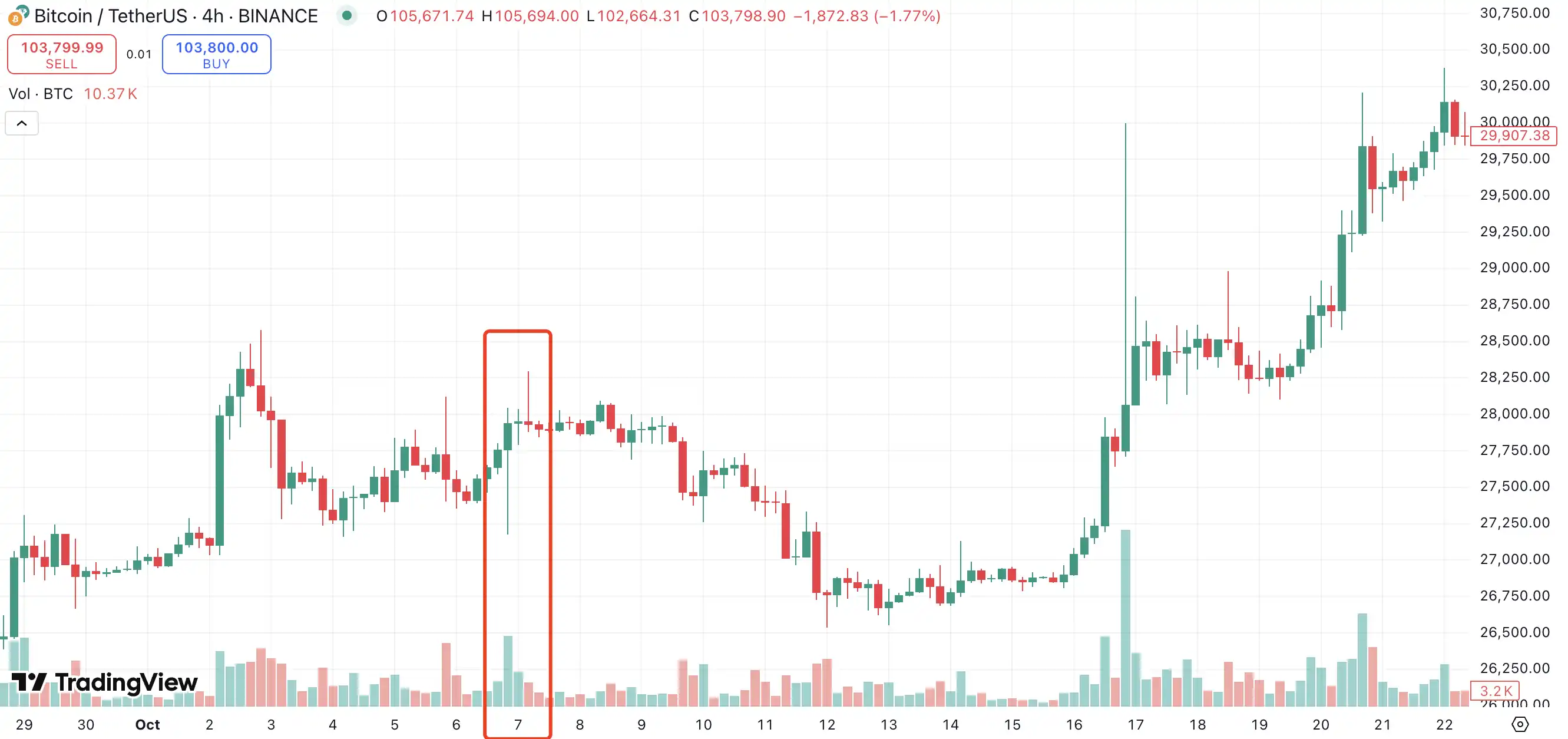Conflict breaks out, does the market pay for it? A look back at the impact of previous international wars on Bitcoin
On June 13, sirens sounded across Israel, launching a preemptive strike against Iran. Israeli Defense Minister Katz declared a national state of emergency, saying that after Israel launched an attack on Iran, missile and drone attacks against Israel and its civilians were expected in the near future.
After the conflict broke out, Bitcoin briefly fell below $102,000, a 24-hour drop of 5%; Ethereum briefly fell below $2,500, a 24-hour drop of 9%.

According to Coinglass data, after Israels attack on Iran broke out, the entire network had a liquidation of US$1 billion in the past 12 hours, of which long positions were liquidated for US$937 million and short positions were liquidated for US$67.71 million.

War has once again broken out in the Middle East, and the 加密貨幣currency market has been shaken violently. In the past few years, local wars have occurred from time to time. For Bitcoin, every conflict means a test of its safe-haven properties and a violent fluctuation in market sentiment.
Russo-Ukrainian War
When the Russo-Ukrainian war broke out in 2022, the role of cryptocurrencies as safe-haven assets, value transfer tools, and means of mobilizing political funds was completely magnified.
On February 17 of that year, before the conflict with Russia arose, Ukraine announced the legalization of Bitcoin.
On February 24, Putin announced a special military operation against Ukraine, and the price of Bitcoin fell sharply, and global stock markets and cryptocurrencies ushered in Black Thursday. As of 18:00 on February 24, Bitcoin plummeted from about US$39,000 to US$35094.2, a 24-hour drop of 10% and a 7-day drop of 20.4%.

Under the influence of market expectations that sanctions may drive Russian funds to flow into cryptocurrencies, Bitcoin once stood at $45,000 after a sharp drop. However, when reports came out that the Ukrainian nuclear power plant was attacked, Bitcoin fell back to around $41,000.
At that time, the Bitcoin computing power and transaction volume in Ukraine and Russia accounted for a very small proportion of the global total. In terms of computing power, there are rumors that the largest Bitcoin mine in Ukraine was hit by a Russian missile, the mine was offline, and the computing power dropped by 33%. However, according to the data of OKEx Chain Master, the computing power of the entire Bitcoin network did not change much at that time. Therefore, the Russian-Ukrainian war itself is not enough to cause huge fluctuations in the Bitcoin market from a technical perspective, and more factors still lie in the market itself.
Russia’s invasion of Ukraine has been called “the world’s first crypto war” as both sides discovered the advantages of a currency that has no borders and does not require recognition. Cryptocurrency has become an important shining point as a means of donation and payment in this Russia-Ukraine crisis, sparking a lot of support on Twitter.
On February 26, just two days after the war began, the Ukrainian government announced the official BTC, ETH, and USDT donation addresses and announced that it would accept cryptocurrency donations. Thousands of people donated millions of dollars in cryptocurrency to help Ukraine fight Russia. Crypto Twitter also mobilized to raise funds for Ukraine. The founder of Pussy Riot, Trippy Labs, and PleasrDAO members launched the Ukrainian DAO and are working to help those who have been harmed by the invasion.
Israeli-Palestinian conflict
On October 7, 2023, the Palestinian armed group Hamas clashed with the Israel Defense Forces, and a round of military conflict between Palestine and Israel officially began. After the conflict broke out, the price of Bitcoin plunged to $27,000 in a short period of time. As of October 15, the Palestinian-Israeli conflict has caused more than 4,000 deaths.

After the outbreak of the war, both sides tried to raise funds through cryptocurrencies for military expenses, rescue, etc. Among them, the Israeli crypto community established Crypto Aid Israel, and the Palestinian side also raised funds through cryptocurrencies.
The decline in Bitcoin prices did not recover until a week later. The most important reason was the fake news tweet released by the crypto media Cointelegraph on the evening of October 16 that the US SEC approved BlackRocks iShares Bitcoin Spot ETF.
Throughout October, armed conflicts continued, but the price of Bitcoin fluctuated upward as the conflict escalated. The reasons behind this are mainly reflected in three aspects. First, the markets immunity to regional conflicts has gradually formed. Bitcoin is a global asset, and its historical response to regional conflicts is often limited, unless the war escalates into a global crisis (such as the early stage of the Russian-Ukrainian war). Although the Israeli-Palestinian conflict is fierce, its geographical scope is relatively small, and the market regards it as a non-systemic risk.
Secondly, the Middle East itself has long been in an environment of financial instability and restricted capital flows. The escalation of conflicts has instead stimulated regional funds to transfer safe-haven assets through USDT or BTC, bringing actual buying support to Bitcoin.
Finally, October 2023 coincides with the decline in US inflation and the increase in expectations of interest rate peaks. At the same time, the expectation of approval of spot Bitcoin ETF continues to rise, which has become the main macro background driving the market up. Even if there are local risk events, the loose liquidity environment and the logic of institutional position building have not changed; for example, during the BlackRock ETF application period, the market risk appetite has increased.
Looking back at the market performance in the last two geopolitical conflicts, we can find a clear pattern. Sudden war news often triggers panic selling first, which in turn triggers the liquidation of leverage on the chain, forming a resonance decline in technical and emotional aspects; and after the liquidation, the market may gradually stabilize or even rebound due to factors such as the return of risk aversion demand and improved macro liquidity expectations. The conflict between Israel and Iran this time may also follow a similar path.
Unlike traditional financial markets, crypto assets play a more complex role in the face of war. On the one hand, it is a highly volatile risk asset that is the first to be impacted by emotions. On the other hand, it is also a borderless, censorship-resistant financial instrument that often becomes the last free channel for funds in extreme events. For this reason, every geopolitical emergency is not only a test of market sentiment, but also a stress test of the real functions of crypto assets.
Whether future wars will trigger similar reactions may not depend on the intensity of the conflict itself, but on whether it reaches the threshold of systemic risk and triggers a reassessment of global liquidity and confidence. However, I hope that the world will be peaceful and war will never become a regular variable in market fluctuations.
This article is sourced from the internet: Conflict breaks out, does the market pay for it? A look back at the impact of previous international wars on Bitcoin
Related: Asymmetry, the background of Bitcoin from the perspective of value investment
Original author: Daii (X: @yzdxs8 ) Today, the price of Bitcoin once again broke through the $90,000 mark, market sentiment was high, and social media was full of cheers of the bull is back. But for those investors who were still hesitant at $80,000 and missed the opportunity to get on board, this moment is more like an inner torture: Am I late again? Should I buy decisively during the pullback? Will I have another chance in the future? This is exactly the key point we want to talk about: In an asset known for its violent fluctuations, is there really a value investment perspective? Can a strategy that seems to run counter to its high risk and high volatility attributes capture an asymmetric opportunity in this turbulent game? Asymmetry…






